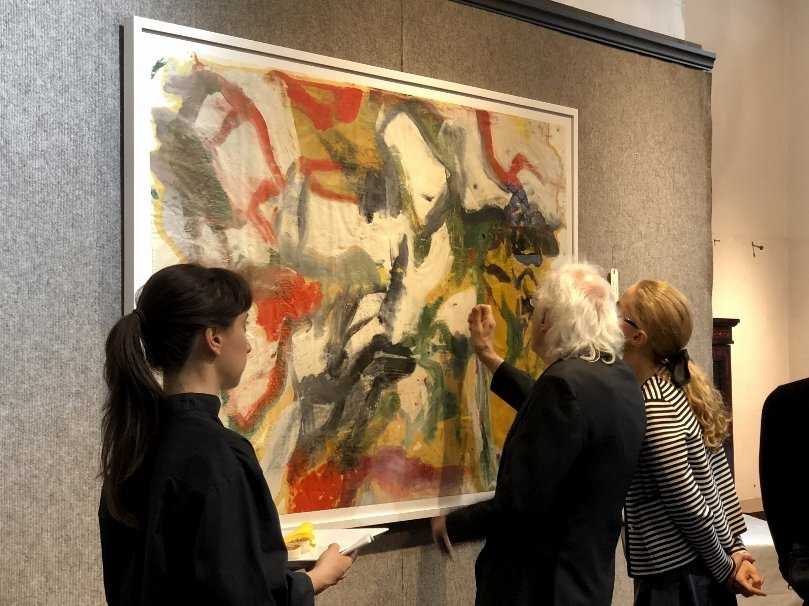Market
Art Dealer Who Claims He Found Six De Koonings in a New Jersey Storage Locker Sells Them for Combined $2.5 Million
The dealer says the sensational discovery was due to a combination of luck and his skill as an art historian.

The dealer says the sensational discovery was due to a combination of luck and his skill as an art historian.

Henri Neuendorf

An art dealer who claims he found six paintings by Abstract Expressionist Willem de Kooning in a New Jersey storage locker has now sold the artworks in a series of three self-organized auctions for a combined total of $2.5 million.
David Killen discovered the works among the contents of an abandoned storage unit he purchased for $15,000 in July. According to the dealer, the unit contained unclaimed works from the studio of the deceased art conservator Orrin Riley, who died in 1986, and his late partner Susanne Schnitzer, who died in 2009. Riley worked in the conservation department of the Solomon R. Guggenheim Museum before setting up his own conservation business.
Executors of Schnitzer’s estate had spent nine years unsuccessfully trying to reunite the leftover artworks with their original owners, but were unsuccessful. Killen says he was able to purchase the contents of the locker after the property was officially classified as abandoned by New York’s attorney general.
Speaking to artnet News shortly after he made the sensational discovery, Killen said he found the de Koonings among approximately 200 “minor works by minor artists.”
In an email to artnet News on Monday, Killen reported that all six works on paper had sold. The first two were auctioned on October 14 for $72,000 and $1.2 million; the next two sold for $31,200, and $690,000 on November 11; and the final pair sold for $270,000 and $240,000 on December 9.
“I’m thrilled, everything went well and I’m happy,” the dealer said. Although the de Kooning Foundation no longer offers authentication services, Killen claimed the results of the sales were proof that the market was confident in their legitimacy. “I think absolutely, 100 percent the results confirm the belief that they’re real,” he said. “They’re beautiful works of quality and not him on his worst day.”
The works, believed to be from the 1970s, surfaced at a moment when de Kooning’s small abstracts from the period were having a strong showing at auction. A small, but notably signed, abstract from 1977 sold at Phillips in May for $4.2 million, more than twice its $2 million high estimate. (The record for a de Kooning work on paper is $6.4 million, set at Sotheby’s in 2015 for a work from his famous “women” series, according to the artnet Price Database.)
The total represents a handsome return on investment for the dealer and auctioneer, who took a $15,000 gamble on the locker. “It’s a series of unlikely coincidences,” he admits. “It was a combination of my skills at an art dealer and art historian and being at the right place at the right time, but also having the fortuitousness to handle it in a way that made it work.”